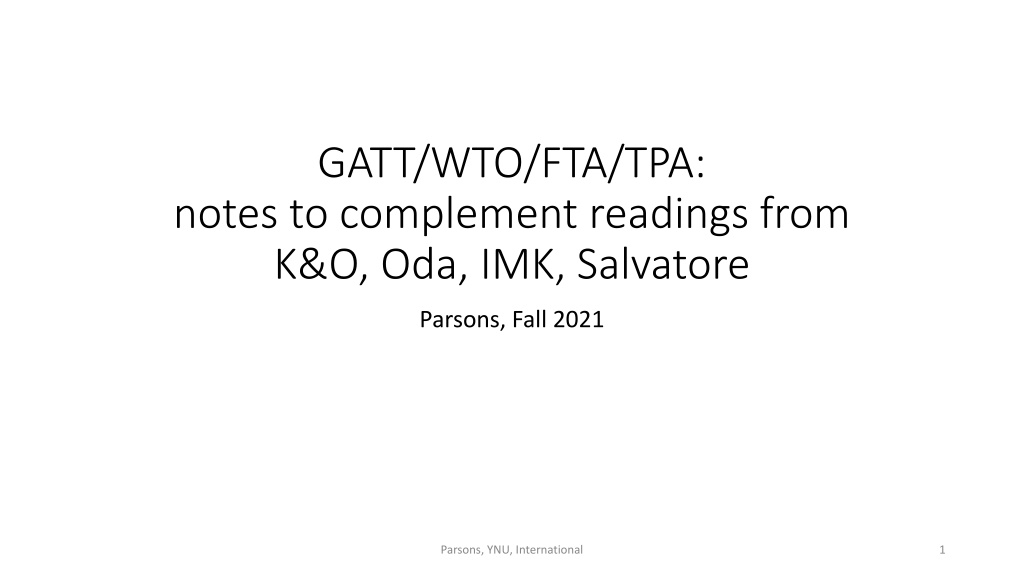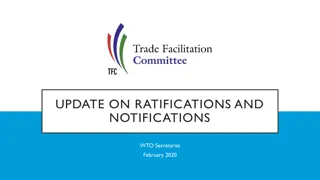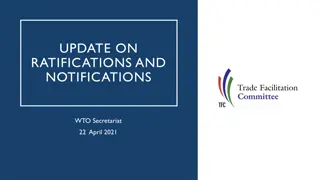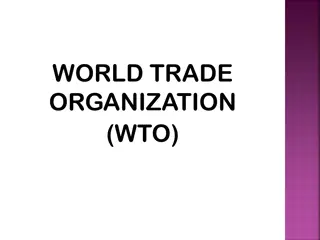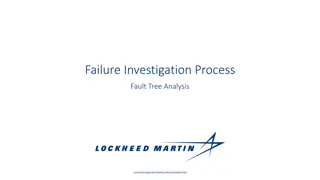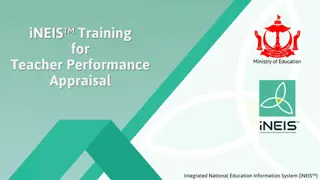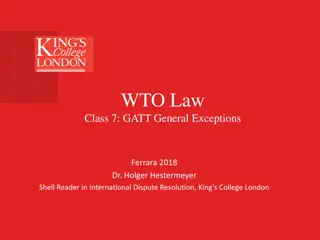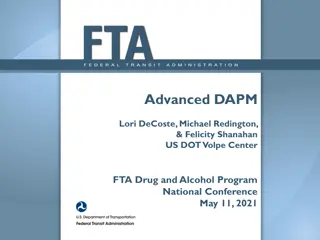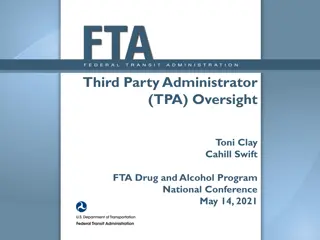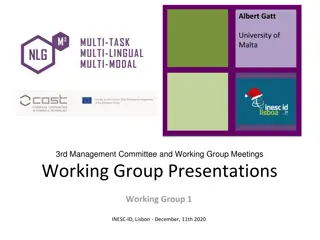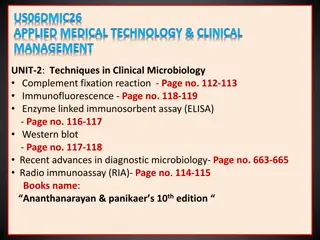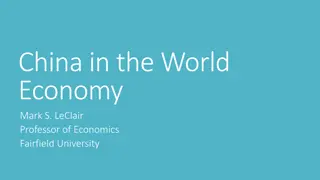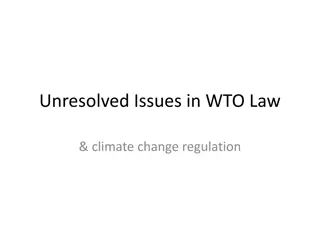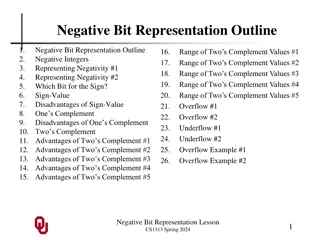GATT/WTO/FTA/TPA: Notes to Complement Readings
GATT (General Agreement on Tariffs and Trade) was formed in 1947 with original 23 founding members. Members promise not to raise tariffs beyond bound tariff lines and to apply the same tariffs to all members. The transition from GATT to WTO occurred in 1995, establishing a formal institution with expanded rules covering services and intellectual property rights.
Uploaded on Feb 24, 2025 | 0 Views
Download Presentation

Please find below an Image/Link to download the presentation.
The content on the website is provided AS IS for your information and personal use only. It may not be sold, licensed, or shared on other websites without obtaining consent from the author.If you encounter any issues during the download, it is possible that the publisher has removed the file from their server.
You are allowed to download the files provided on this website for personal or commercial use, subject to the condition that they are used lawfully. All files are the property of their respective owners.
The content on the website is provided AS IS for your information and personal use only. It may not be sold, licensed, or shared on other websites without obtaining consent from the author.
E N D
Presentation Transcript
GATT/WTO/FTA/TPA: notes to complement readings from K&O, Oda, IMK, Salvatore Parsons, Fall 2021 Parsons, YNU, International 1
GATT (General Agreement on Tariffs and Trade) Formed in 1947, entered in force Jan 1, 1948 Original 23 founding members were: Australia, Belgium, Brazil, Burma, Canada, Ceylon, Chile, China (Taiwan at that time), Cuba, Czechoslovakia, France, India, Lebanon, Luxembourg, Netherlands, New Zealand, Norway, Pakistan, Southern Rhodesia (now Zimbabwe), Syria, South Africa, United Kingdom and the United States. Japan joined GATT in 1955; China (mainland) joined in 2001; Chinese Taipei (Taiwan in 2002); Russia in 2012; Vietnam in 2007. Non- members: North Korea, Iran, Algeria, etc. (about 14). Parsons, YNU, International 2
What do GATT/WTO members promise to do? Basically two big things. Never raise tariffs or impose stricter tariffs than that already exist. ( Bound tariff lines.) For example, Japan s (WTO) tariff on mineral water is 3%. Japan can never raise it to, say, 5%. If they do, other countries have a right to retaliate with tariffs on Japanese exports. Apply the same tariff on all members. (Principle of non- discrimination. Or Non-Discrimination principle. Article 1.) From GATT/WTO any advantage, favour, privilege or immunity granted by any contracting party to any product originating in or destined for any other country shall be accorded immediately and unconditionally to the like product originating in or destined for the territories of all other contracting parties. Parsons, YNU, International 3
And members promise not to distort trade in other ways too Members, in principle, CANNOT use export taxes, export subsidies, or even import subsidies to distort trade. Parsons, YNU, International 4
When did GATT become WTO? 1995. In the final Round , concluded in 1994, the Uruguay Round, the GATT members decided the rules to set up a permanent institution, the WTO. (Its headquarters are in Geneva, Switzerland.) Parsons, YNU, International 5
Are the GATT and WTO different? They serve the same basic functions. But there are several important differences. (See Oda text in Japanese, or if you want to read more in English, check out Salvatore, Chap. 9). Some of the Main points about the new WTO (from Oda, p 214, in Japanese): A) The WTO is now a formal institution (like IMF or World Bank), not simply a bunch of contracts between members. Still staff is small. WTO has about ?? Working there. World has over 500 (now, about 600) employees/staff. World Bank employs over 12,000 people and has a HUGE budget (loans, etc.) B) WTO rules were expanded to cover services trade and intellectual property rights. C) The arbitrariness of existing trade rules, such as the ADD Agreement and Safeguard devices, has been corrected. D) Agricultural and textiles sectors: The WTO rules will also be applied to areas where the rules have not been fully covered, such as agriculture and textiles. (Still many exceptions, however.) Parsons, YNU, International 6
Some special featuresin WTO (from p. 215 in Oda, in Japanese) A) Minimum access/Market Access B) Negative consensus instead of positive consensus C) Single Undertaking (rather than old, opt in, opt out) Let s discuss each of these in turn Parsons, YNU, International 7
A.) Minimum Access The concept of Minimum access and market access was introduced. (Especially in Agriculture.) Relatedly, efforts are being made to replace import quotas, which are inflexible and non-transparent, to tariffs. This is the so-called tariffication process. Parsons, YNU, International 8
B.) Negative Consensus From www.wto.org This special decision-making procedure is commonly referred to as negative or reverse consensus. ... In other words, any Member intending to block the decision to adopt the report(s) has to persuade all other WTO Members (including the adversarial party in the case) to join its opposition or at least to stay passive. For example: If US complains in WTO against China export subsidies And if China loses (i.e. WTO rules that China is, indeed, subsidizing), then China can overrule ( ?) the decision ONLY IF ALL MEMBERS, including the US (the complainant) agrees with China (!). Parsons, YNU, International 9
Negative consensus continued Under GATT, there was POSITIVE consensus. If ANY SINGLE member objected to the ruling under the DSM*, it could be overruled. For example, if only China was to reject the ruling, it will be rejected. (This is similar to the 5 permanent member veto rights in UN Security council.) (Surprisingly, even under the Negative consensus rules of GATT, few rulings were overturned!) * DSM is Dispute Settlement Mechanism . DSB is Dispute Settlement Body or Parsons, YNU, International 10
C) Single Undertaking When negotiating a trade agreements, ALL sectors, and ALL issues re negotiated at once. Members can longer pick and choose the sectors or areas in which they want to participate in. This started in the last round of GATT, the Uruguay Round. This is why the Uruguay Round was so successful (large, deep liberalization), but also why it took longer than previous rounds to conclude. Parsons, YNU, International 11
GATT (and WTO) had Rounds of Trade Liberalization How many Rounds were there? 8 under GATT. (See Tables in next slides. Which were MOST successful, in your view?) How many Rounds have been completed in WTO? None. The Doha round (see K&O&M) was started in 2001, and then a big push was tried in 2007, but members could not agree. For example, big countries like US and EU could not find agreement with new Round participants such as India and Brazil. Parsons, YNU, International 12
The future of the WTO? The WTO is unable to make very many big decisions. It has a new Director General, Ms. Dr. Ngozi Okonjo-Iweala (first female and first from Africa.) But, the Appellate Body (part of the Dispute Settlement Mechanism, DSM) usually made of 7 judges , is vacant. 0 judges. US, EU, China, etc. cannot agree on who to nominate. New trade liberalization rounds? Not Likely. RCEP and CP-TPP moving faster. Also, President Biden currently seems to have no interest in more trade liberalization. Maintaining all Trump tariffs. And not renewing fast-track Trade Promotion Authority (TPA) in the US. The US now cannot quickly negotiate FTAs Parsons, YNU, International 16
Fast Track , Trade Promotion Authority (TPA) Fast Track (also called "Trade Promotion Authority" since 2000} A procedure adopted by the U.S. Congress, at the request of the President, committing it to consider trade agreements without amendment. In return, the President must adhere to a specified timetable and other procedures. Introduced in the Trade Act of 1974. From http://www-personal.umich.edu/~alandear/glossary/f.html#FastTrack Parsons, YNU, International 17
Fast Track Procedure or TPA (Trade Promotion Authority) Parsons, YNU, International 18
TPA lapsed this year and President Biden failed to re-new it. Parsons, YNU, International 19
References Tables for GATT Rounds are from D. Salvatore, 9th edition and Ishikawa, Mukunoki and Kikuchi, 2nd edition. Parsons, YNU, International 20
